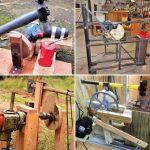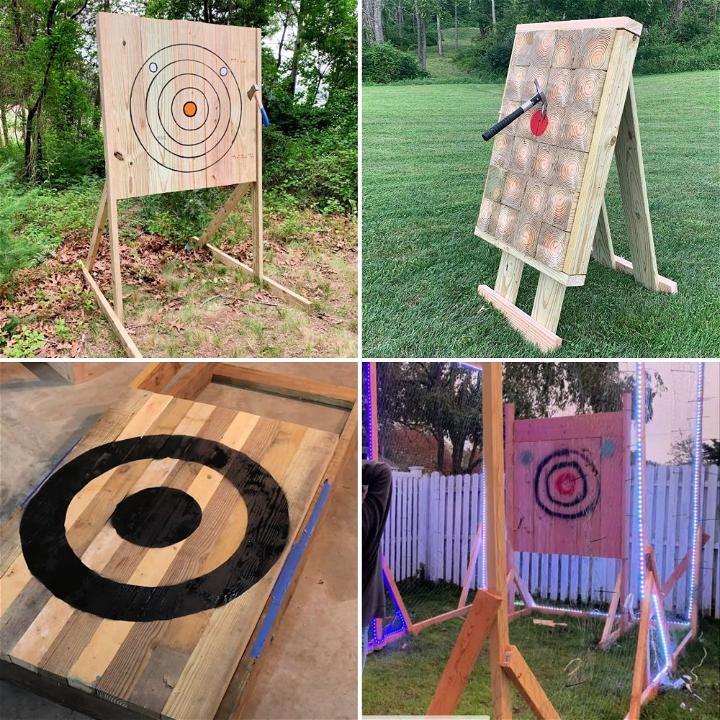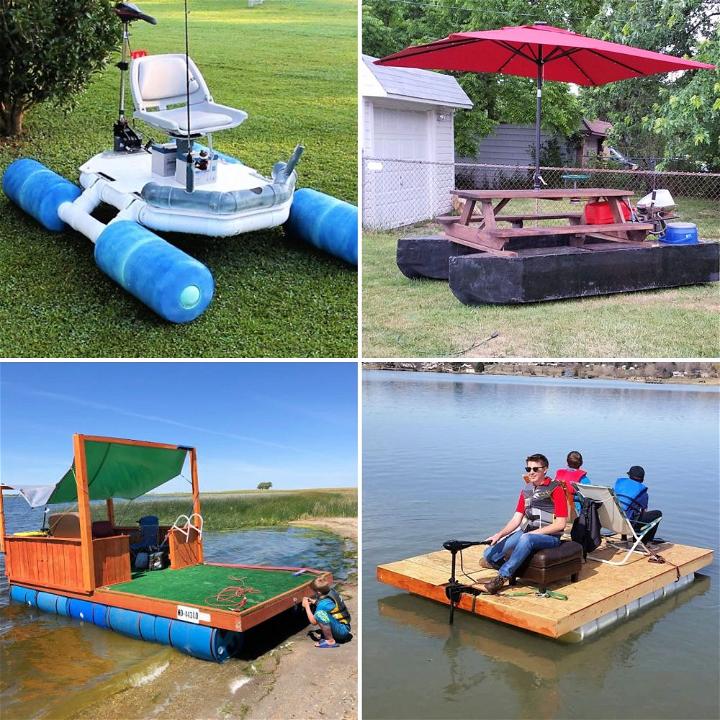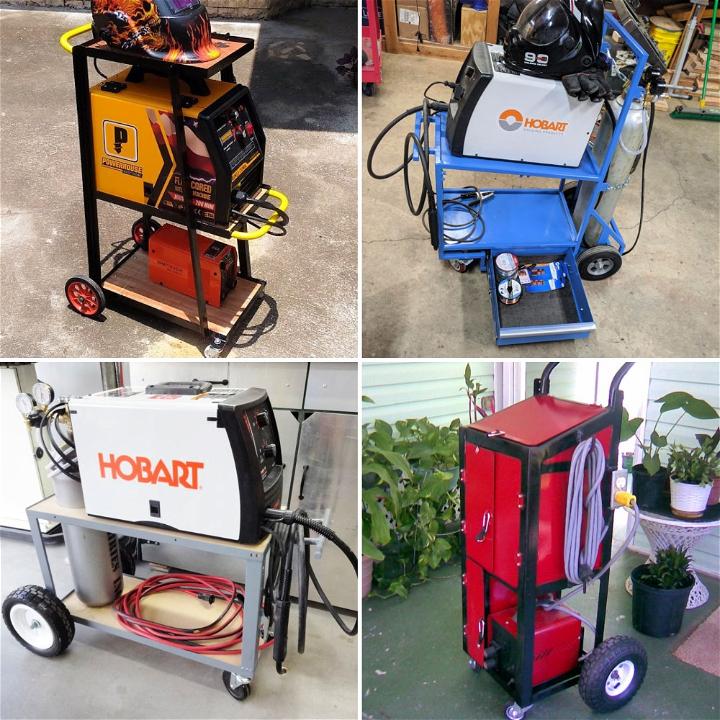Building a utility trailer can seem like a daunting task, but with the right guidance, it's achievable and immensely rewarding. Whether for hauling equipment, moving furniture, or transporting vehicles, a utility trailer is incredibly versatile. This guide will provide you with a comprehensive overview of making your utility trailer, inspired by insights from a detailed video by Stoney Ridge Farmer.
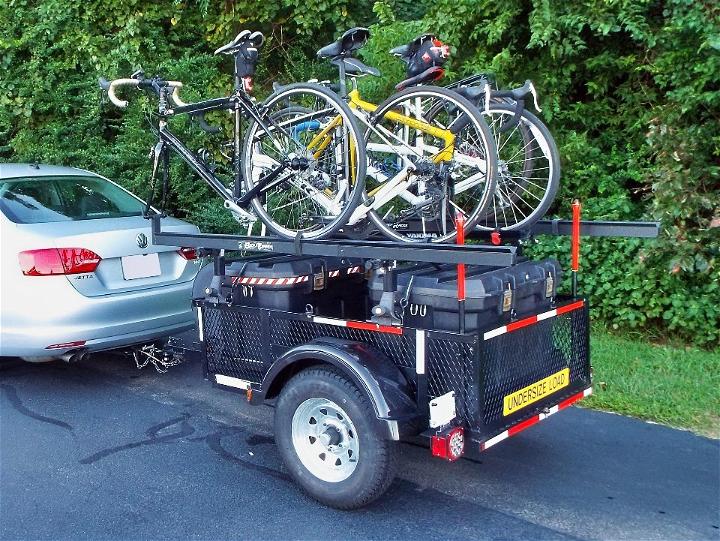
What Will I Get Out of This Guide?
From this article, you'll understand:
- Essential materials and tools needed
- Step-by-step instructions to build a utility trailer
- Tips and tricks for enhancing durability and functionality
- Safety precautions to observe during the building process
- The benefits of building your own trailer compared to buying one
Materials and Tools Needed
- Steel Frame: Provides the foundation. Opt for high-quality steel for durability.
- Thermoformed Polymer Bed: Lightweight, rust-proof, and strong for the trailer base.
- Welding Equipment: Necessary for assembling metal parts securely.
- Aluminum for Framework: For a structure that doesn't corrode.
- Nuts, Bolts, and Fasteners: Ensure these are stainless steel to avoid rust.
- Ramps or Tilt Mechanism: Depending on the intended use.
- Axles and Wheels: Consider the load capacity and whether a single or tandem axle fits your needs.
- Safety Equipment: Gloves, goggles, and protective clothing for welding and assembly.
Step-by-Step Instructions
Step 1: Design and Planning
Before cutting or welding, plan your trailer. Decide on the size, load capacity, and whether you'll use it for general use or specific tasks. Sketching a simple blueprint can help visualize the end product.
Step 2: Build the Frame
Using steel, construct the frame. This structure should include the trailer's perimeter and support beams. Precision is key, so measure twice and cut once. Weld the pieces together, ensuring solid joints.
Step 3: Attach the Axles
The axles should align perfectly with the frame to ensure your trailer tracks straight. Weld or bolt the axles to the frame based on your design. Remember, the placement affects load distribution.
Step 4: Add the Polymer Bed
A thermoformed polymer bed is lightweight and durable, ideal for a utility trailer. Secure this bed to the frame using bolts for easy replacement or maintenance.
Step 5: Install the Wheels and Suspension
Attach the wheels to the axles, ensuring they're tightly secured. Consider a rubber torsion suspension for durability and better load management.
Step 6: Apply Finishing Touches
Add ramps or a tilt mechanism for easy loading and unloading. Install lights and reflectors for safety. Finally, paint or coat the steel frame to prevent rust.
Safety and Maintenance Tips
- Always wear protective gear when welding or cutting metal.
- Regularly inspect the trailer for any loose bolts or structural damage.
- Keep the wheels and axles well-lubricated for smooth operation.
Troubleshooting Common Issues
- Misaligned Wheels: Ensure axles are correctly welded to the frame. Misalignment can cause towing issues.
- Rust Formation: Apply a protective coat regularly to prevent rust, especially if you live in a humid area.
The "Why" Behind Steps
Choosing a polymer bed over traditional wood provides a rust-proof, lighter, and more durable base, enhancing the trailer's longevity. The use of stainless steel fasteners ensures that connections remain secure and free from corrosion.
Video Tutorial
For a visual demonstration, watch a step-by-step video tutorial on YouTube: Stoney Ridge farmer's utility trailer build.
It provides a clear and easy-to-understand visual walkthrough, making it a great companion to this written guide.
FAQs About DIY Utility Trailers
When embarking on a DIY utility trailer project, many enthusiasts have questions about the process, legalities, and best practices. Here's a helpful section addressing some of the most common inquiries.
Do I Need a Title for My DIY Utility Trailer?
Yes, in most cases, you will need a title for your DIY utility trailer. The process for obtaining a title varies by location, so it's essential to check with your local Department of Motor Vehicles (DMV) or equivalent agency. They can provide specific requirements, such as inspections or documentation needed.
What Are the Legal Requirements for Towing a Utility Trailer?
Legal requirements for towing a utility trailer include having the proper license, adhering to weight limits, and ensuring your trailer has the necessary safety features like lights and brakes. Again, these regulations can differ, so consult your local transportation authority.
Can I Get Roadside Assistance for My Trailer?
Many insurance companies offer roadside assistance for trailers. It's a good idea to have this coverage in case of a flat tire or mechanical issue while on the road.
Is It Possible to Insure My DIY Utility Trailer Against Theft?
Yes, you can insure your DIY utility trailer against theft. Speak with your insurance provider about adding trailer coverage to your policy.
What Should I Consider When Choosing Tires for My Trailer?
Select tires that match the size and load capacity of your trailer. It's also wise to choose a reputable brand known for durability and performance.
How Can I Ensure My DIY Trailer Is Safe?
To ensure safety, perform regular maintenance checks, including inspecting tires, lights, and brakes. Always secure your load properly to prevent shifting during transport.
What If I Need to Make Repairs or Replace Parts?
For repairs or replacements, consult the manufacturer's guidelines for your trailer's components. Use only quality parts that meet safety standards.
20 DIY Utility Trailer Ideas and Inspirations
Discover 20 DIY utility trailer ideas and inspirations to enhance your hauling capabilities. Get creative with these innovative and practical designs.
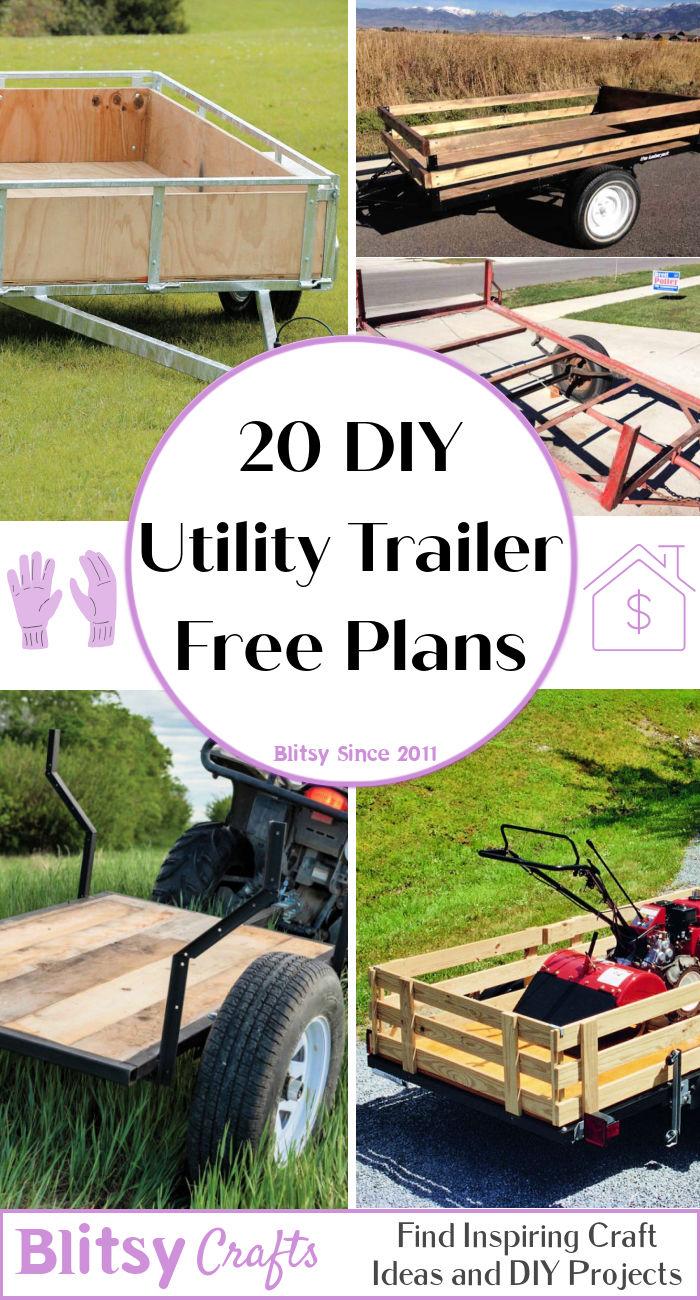
1. DIY Utility Trailer from Kit

Assembling a utility trailer from a kit marries convenience with customization. It's a perfect introduction to DIY for beginners, offering a straightforward approach with clear instructions. Plus, you get the satisfaction of building something functional with your own hands.
2. How to Build an ATV Trailer
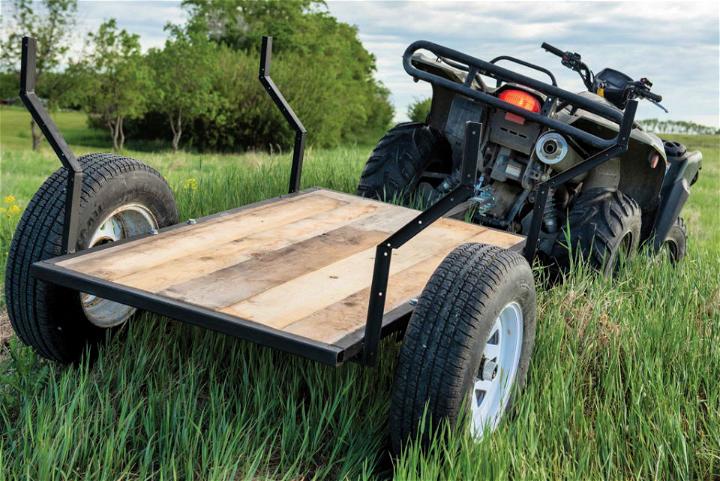
Crafting an ATV trailer can elevate your outdoor adventures, making it easier to transport gear across various terrains. This easy DIY project provides an opportunity to tailor the trailer size and features to fit your specific needs, enhancing the versatility of your ATV
3. DIY Utility Conversion Trailer
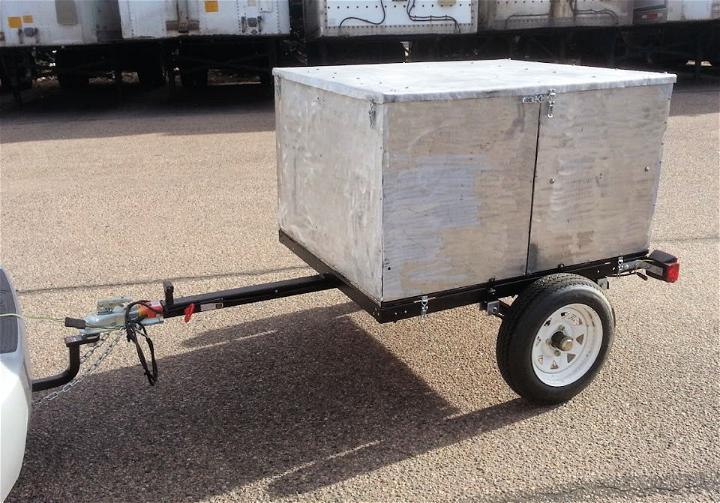
Turning an old trailer into a utility wonder provides a cost-effective solution for hauling needs. This creative endeavor allows for personalized adjustments, enabling the transformed trailer to tackle diverse tasks, from moving garden supplies to transporting tools.
4. How to Restore an Old Trailer
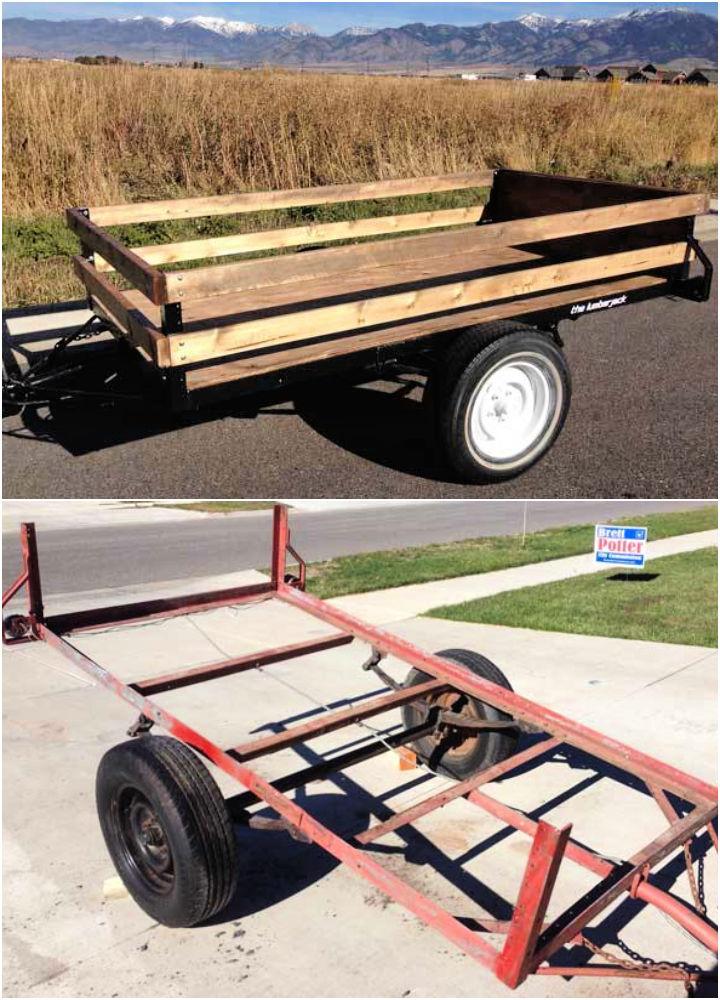
Breathing new life into an old trailer not only saves money but also adds a touch of nostalgia. Restoration involves basic repairs, a fresh coat of paint, and maybe some new parts, culminating in a revived trailer with character and history. It is super-easy to work on this transformation project, even for beginner DIYers and crafters.
5. Free Basic Utility Trailer Plan
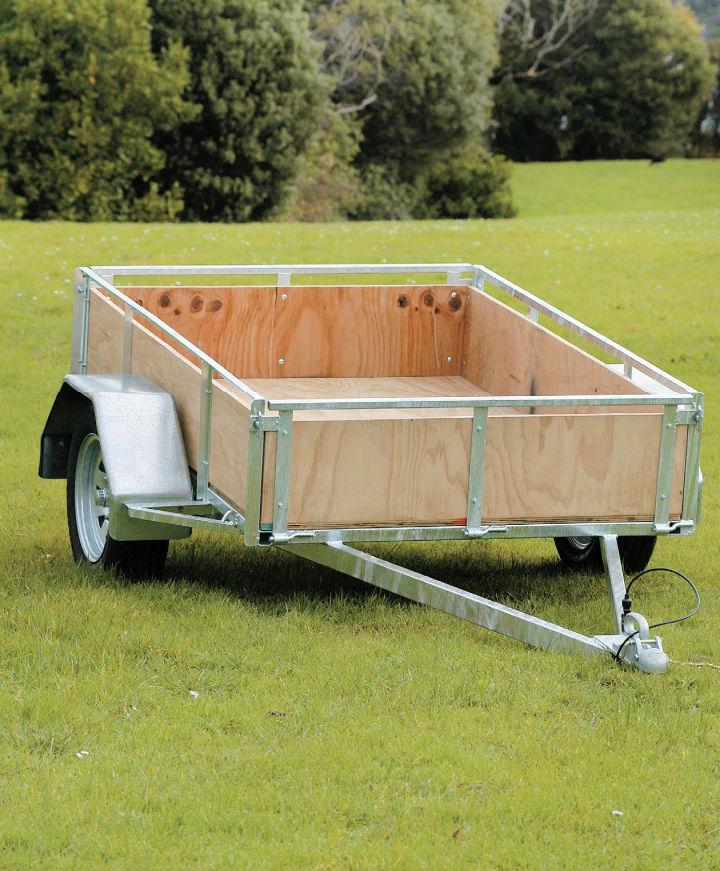
Accessing a free utility trailer plan is a great starting point for DIY enthusiasts. These plans serve as a blueprint, guiding builders through the construction process with detailed measurements and suggested materials, making the journey from concept to completion straightforward and rewarding.
6. DIY Lawnmower Utility Trailer
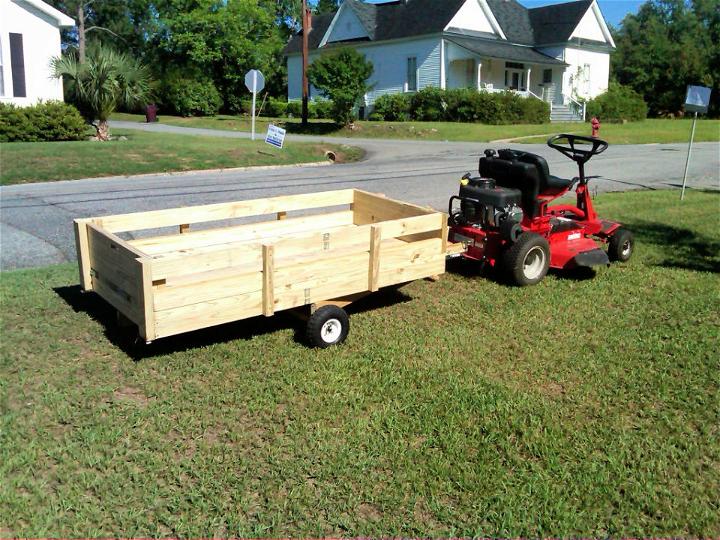
Building a lawnmower utility trailer enhances gardening efficiency by facilitating the transport of tools and debris. This DIY project is practical, offering a modified solution specifically designed to meet the gardening community's needs, simplifying lawn care routines.
7. DIY Wood Sides on a 5x8 Utility Trailer
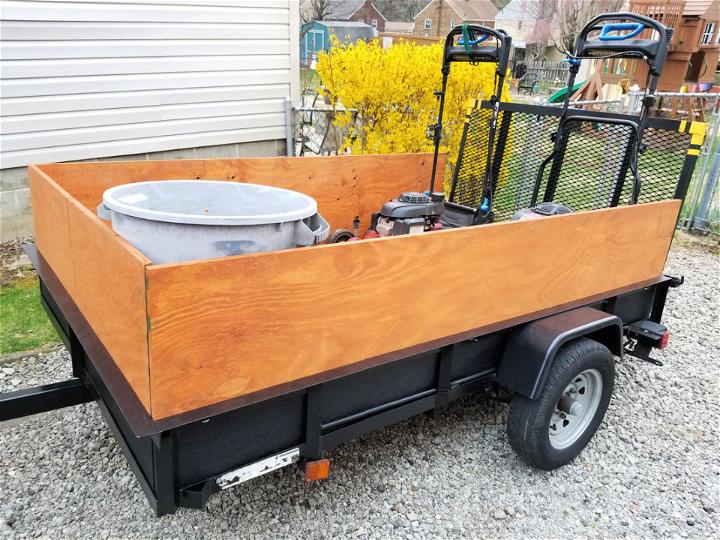
Adding wooden sides to a 5x8 utility trailer enhances its functionality and aesthetic appeal. This customization improves cargo security, making it ideal for transporting smaller items that require containment. It's a simple yet effective modification that boosts the utility and versatility of the trailer.
8. Homemade Utility Bike Trailer

A homemade utility bike trailer is a sustainable, cost-effective way to increase your bicycle's hauling capacity. Ideal for urban dwellers, it promotes an eco-friendly mode of transport, perfect for grocery runs or hauling personal items, seamlessly blending utility with exercise.
9. Blueprints for Utility Trailer Plan

Blueprints for a utility trailer plan provide a detailed framework for building a robust and reliable trailer. They include specifics on dimensions, weight capacity, and materials, ensuring that even those new to DIY can embark on a project with confidence and clarity.
10. DIY Utility Trailer for Under $300
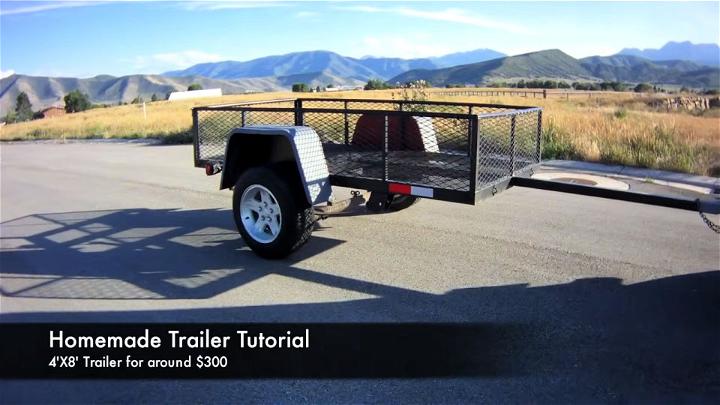
Constructing a utility trailer on a budget under $300 is a testament to ingenuity and thriftiness. This economical approach focuses on leveraging affordable materials and smart design to build a functional trailer, proving that practical solutions don't have to break the bank.
11. Building a 4x7 Utility Trailer
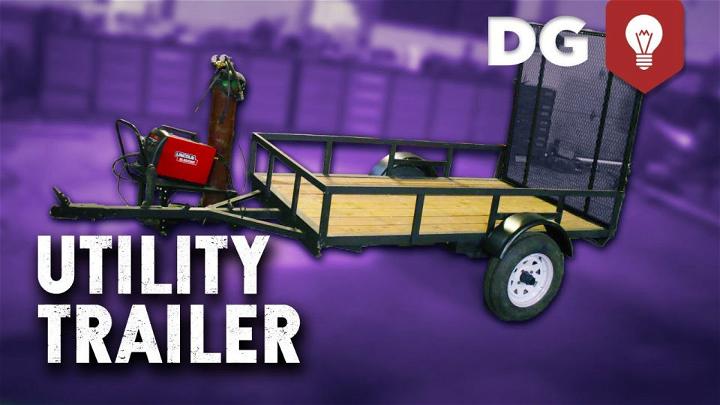
Building a 4x7 utility trailer rewards you with a compact, maneuverable size perfect for small loads and tight spaces. Its design caters to weekend warriors needing to haul garden supplies or light equipment, offering an efficient way to transport goods without requiring a large towing vehicle.
12. DIY Utility Trailer From Pop-Up Tent Trailer
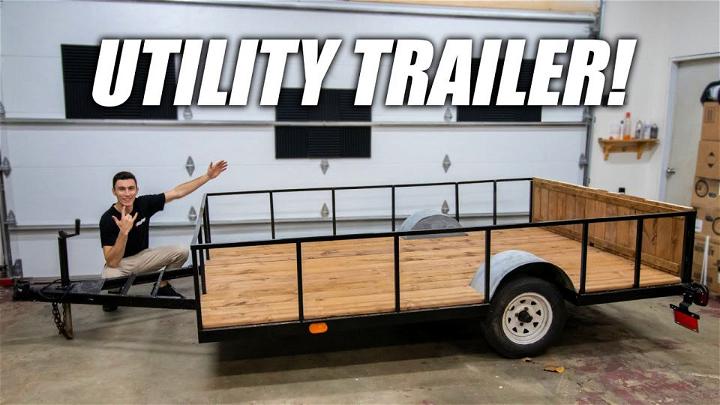
Repurposing a pop-up tent trailer into a utility trailer is a creative and environmentally friendly project. It gives a second life to something that might otherwise go to waste, providing a spacious platform for hauling. This approach combines sustainability with practicality, ideal for budget-savvy DIYers.
13. Build Your Own 6' X 12' Utility Trailer
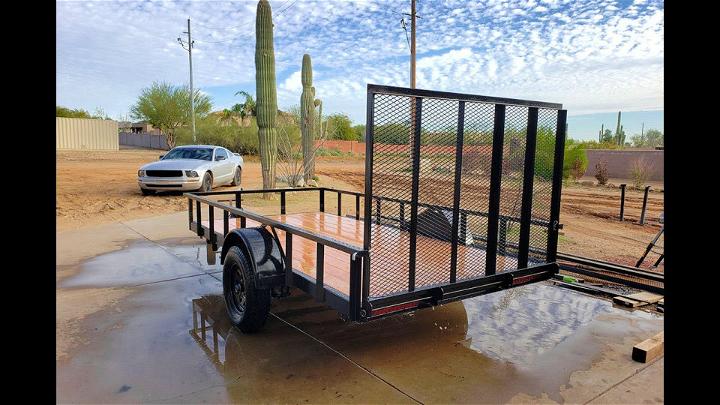
Opting to construct a 6' x 12' utility trailer presents an opportunity to have a mid-sized hauler that's versatile for both personal and business uses. It's great for transporting larger items like furniture or equipment, making it a worthy project for those requiring more carrying capacity.
14. DIY Utility Trailer Step-by-Step Instructions
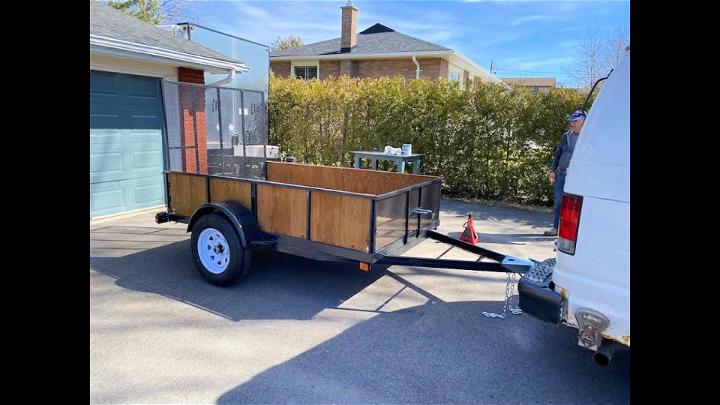
Tackling a DIY utility trailer project? Following step-by-step instructions can demystify the process, guiding you from planning to execution with clarity. This approach ensures you cover all necessary bases, leading to a safe and sturdy trailer built with your own hands.
15. Harbor Freight Utility Trailer Design
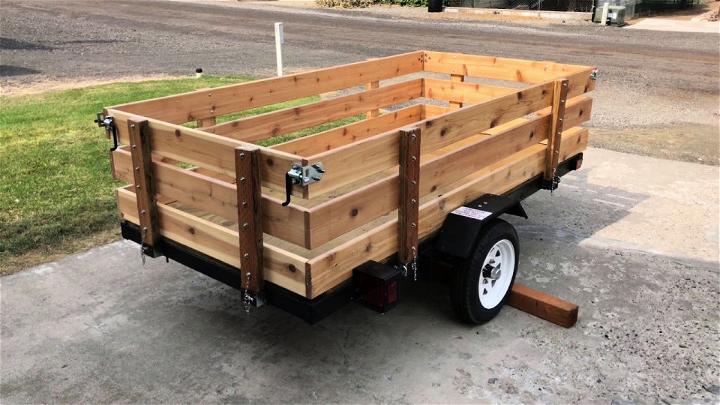
The Harbor Freight utility trailer offers a straightforward, economical solution for light to medium hauling needs. Its design focuses on functionality and affordability, making it a popular choice for those seeking a reliable trailer without the customization process.
16. DIY 5x8 Aluminum Utility Trailer
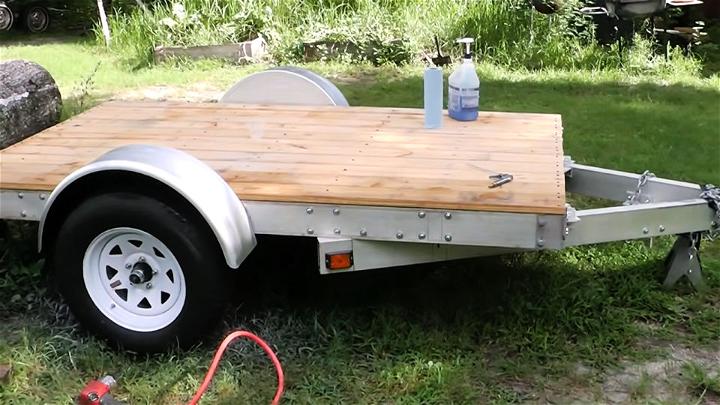
Building a 5x8 aluminum utility trailer combines lightweight durability with ample space for numerous hauling tasks. Aluminum's resistance to rust is a plus, keeping maintenance low while providing a good balance between size and maneuverability for a variety of applications.
17. Custom Stepdeck Gooseneck Trailer
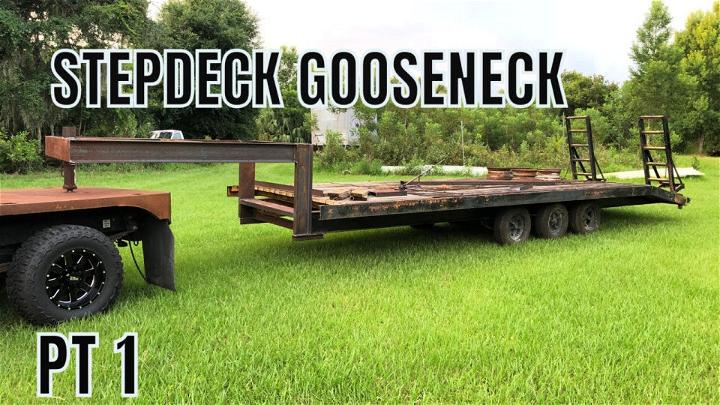
A custom step-deck gooseneck trailer is tailored for those needing to transport heavy or oversized items with ease. Its unique design allows for lower load heights, offering stability and flexibility. Ideal for commercial haulers, it's a game-changer in how you move cumbersome equipment.
18. DIY Motorcycle Trailer
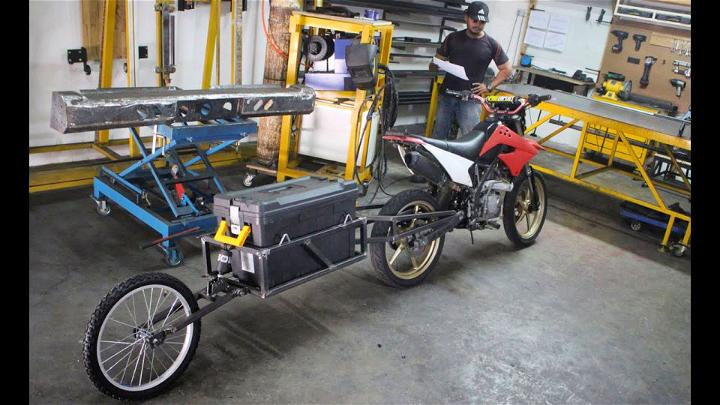
Designing your motorcycle trailer is an exciting project that caters to bikers wanting a customized way to transport their rides. Such a trailer can be tailored to fit specific sizes and requirements, ensuring your motorcycle is supported and secure during travel.
19. Homemade Double Axle Trailer Plan

Embarking on a homemade double-axle trailer project equips you with a robust solution for heavier loads. The added stability and weight distribution of a double axle design means you can confidently transport larger items, setting the stage for a wide range of hauling capabilities.
20. How to Make a Utility Trailer
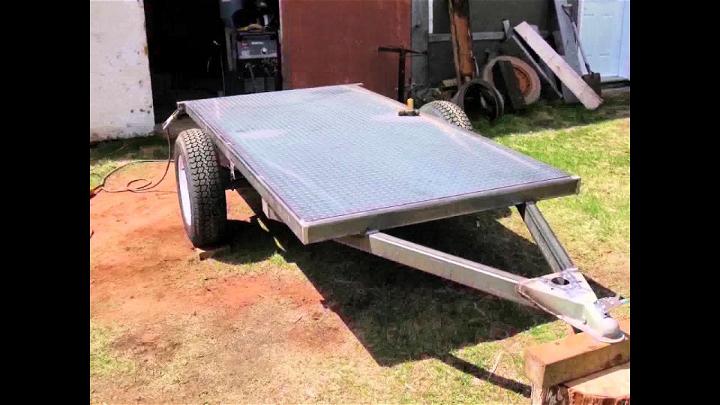
Learning how to make a utility trailer opens up a world of DIY possibilities. Starting with a solid plan and the right materials, you can craft a trailer that fits your specific needs, whether for business or pleasure, ensuring a functional and personalized utility vehicle.
Conclusion:
In conclusion, building a DIY utility trailer can be a rewarding and practical project for any handy individual. By following the step-by-step instructions in this guide, you can build a reliable trailer that meets your specific needs. Whether you use it for transporting materials or equipment, this homemade trailer will save you time and money in the long run.



